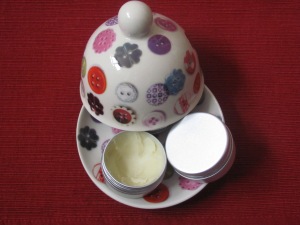There is nothing better – I feel – on a cold, dark, depressing winter’s day than biting into a tasty orange and let the juice trickle everywhere. In a way, it is a pity citrus fruits have become so easily available nowadays, as they have lost a bit of their wonderfulness along the way. I can easily imagine how lovely it would have been to get oranges as a treat on St Nicholas’ Day and on that day only (as a Belgian, it has to be St Nicholas’s Day rather than Christmas). And I do understand why Brits are so fond of their marmalades: they do capture some of this citrusy sweetness and bitterness. Preserves are never the real deal, but they are fun to make, and this year, for the first time, I have made marmalade and candied peel. It took a bit of trial and error and I had to re-boil my marmalade the day after I had made it because it was far too liquid. The result is not perfect but I have learnt useful techniques along the way.
The best orange I ever tasted was in Greece, somewhere in the Peloponnese on the side of a road. But in antiquity, citrus fruits were not widely available in Greece. The only citrus fruit known was the citron, which was first called in Greek ‘apple from Media (melon Medikon)’ – ‘apple’ (melon) is the Greek word for almost all fruits that grow on trees; and ‘Media’ refers to what the Greeks believed to be the fruit’s place of origin, somewhere in modern Iran. The Romans called the same fruit citreum, and that name was then borrowed by the Greeks. Citrons were, it seems, used more often in medicines than as eating fruits. Here is what Dioscorides, the first-century CE author of a very influential book on pharmacological ingredients had to say about them:
These fruits [citrons], drunk in wine, have the power to counteract poisons and to open the bowels. Both their decoction and their juice are useful as a mouthwash for sweet breath. They are mostly eaten by women against kissa [that is, the strange cravings women get in pregnancy]. And placed in small boxes, they seem to protect clothes against moths. (Dioscorides, Materia Medica 1.115)
Recipes found in other medical writings confirm Dioscorides’ description. Citrons were indeed believed to be powerful antidotes. They were used for belly complaints, and were the main ingredient in a preparation called kitraton. Here is the recipe for that preparation, as preserved by Aetius (a sixth-century CE medical author)
How to prepare kitraton: eight ounces of the skin of beautiful citrons or the leaves of their tree; 2 sextarii of wine and one sextarius of honey. Soak the skin or leaves in wine for seven days. Then dispose of the wine and crush with the honey and use. (Aetius 16.161)
One particular usage of citrons in belly complaints was for pregnant women. Pliny (first century CE) informs us that pregnant women ate the pips of the fruit to avoid nausea in pregnancy (Natural History 23.105) and Soranus (first-second century CE) recommends citrons as something to be smelt by a woman in labour when she is very weak (Gynaecology 2.2). In the spirit of experimentation, I have tried some lemon pips. They were incredibly bitter. I am not sure whether they would have done anything good when I was suffering from morning sickness. Interestingly, I did find that some women still recommend them on natural health forums. In any case, in small quantities, they cannot hurt, and I know that many women would try anything to rid themselves of morning sickness (on which more next week).
I tried to capture some of the aroma of citrus fruits in this lipbalm. You will need
– 10 g. beeswax (if you are vegan, you can replace with a vegetable wax)
– 15 g. cocoa butter
– 10 g. shea butter
– 1 tablespoon (15 ml.) jojoba oil
– 1 tablespoon and 1 teaspoon (20 ml.) sweet almond oil
– 1 teaspoon (5 ml) glycerin (optional)
– 1 teaspoon aloe vera gel (optional)
– 3 drops lemon essential oil
– 3 drops mandarin essential oil
Do not be put off by the large number of ingredients. I read many recipes for balms and was baffled by the numbers of ingredients until I realized what you need is the same amount of wax/butter and oil. You could make a balm only with cocoa butter and sweet almond oil for instance. Glycerin makes the texture more like a gel. Aloe vera has healing properties.
Melt the wax and butters in the double boiler.
When they have melted, take off the heat and add the jojoba and sweet almond oils. Mix together. Then add the glycerin and aloe vera. Finally add the essential oils.
Pour into small containers. I have bought mine especially for this purpose, but you could use small sweet-tins (which you have thoroughly washed and sterilized). Let the preparation cool down.





